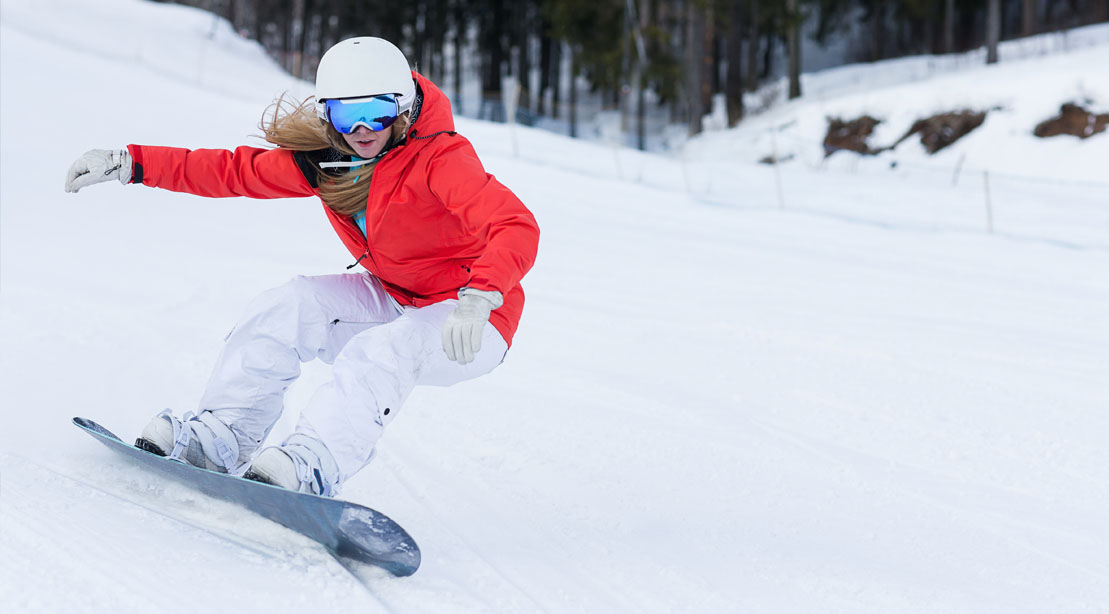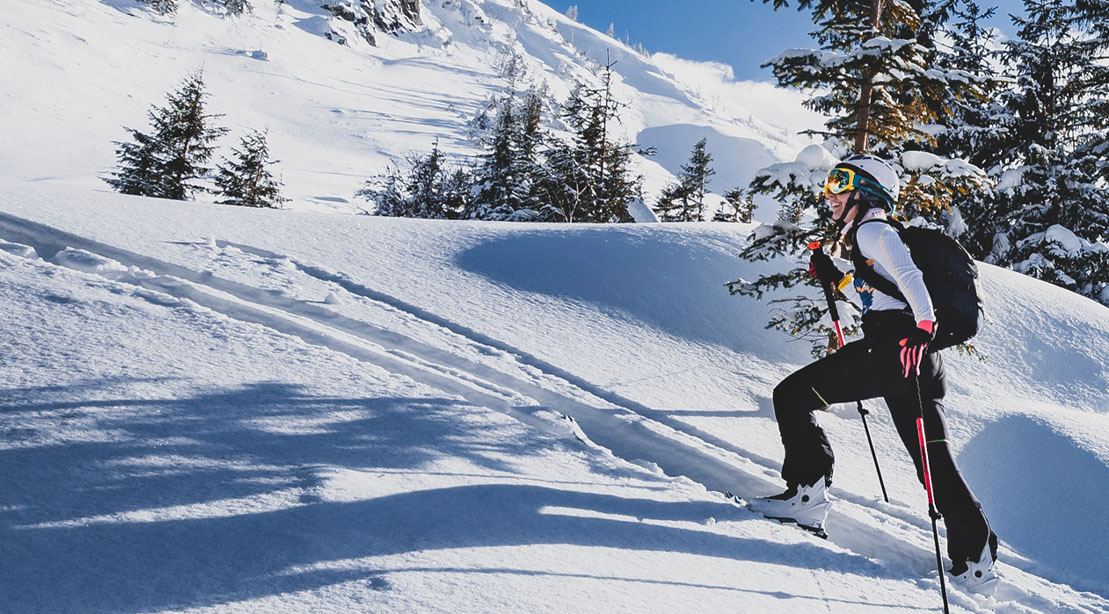It may be cold and snowing outside, but there’s no better time to get involved in backcountry winter sports—especially if you’re looking to get in killer shape during the cold months.
Snowboarding, snowshoeing, and cross-country skiing (among other winter sports) are not only fantastic ways to stay physically active in the colder months, but they also allow you to explore beautiful, snow-covered areas of the country you may not have visited otherwise.
If you’ve never participated in winter sports, the names alone can make you feel a bit intimidated. After all, there’s the equipment and gear you’re not familiar with, and getting out in the snow might not be your thing.
However, pre-pandemic, backcountry was the fastest-growing segment in the Snowsports industry, and for good reason. They give a powerful, full-body workout during months when you may tend to be less active, and help ward off symptoms of SAD, a seasonal depression many deal with as the days get shorter and activity levels lessen.
Here, Kelly Jensen, manager of The Alpineer in Crested Butte (part of the Christy Sports brand of stores) gives us a closer look at the benefits of winter sports and the impact they have on the bodies and minds of the many who participate.

How Get Involved with Winter Sports
You may think you have to be in top-level shape to try your hand at winter sports, but that couldn’t be further from the truth. However, they might just land you in the best shape of your life.
“You do not need to necessarily be at peak fitness to jump into backcountry skiing or riding,” Jensen says. And fortunately, there are approachable paths for any fitness level to enter the sport.
Jensen recommends setting realistic goals, start training, even find a mentor who has experience in the sport you’re trying out. And don’t forget to start off slow, Jensen says. Jensen.
Apply the same measures you did when hitting the gym for the first time: go slow, take your time, warm up, cool down, and listen to your body.
The Benefits of Backcountry Winter Sports
- The Body: The physical benefits should be obvious. You’ll be getting plenty of exercise, and during the winter, when most of us stay indoors a little bit more than we want, can be a huge additional bonus. “The great thing about backcountry winter sports is you can go fast or slow, heavy or light, stay close to home, or get far out there; all while getting an amazing workout that is also quite engaging,” Jensen says. Way better than being cooped up inside all winter.
With many winter sports, you’ll get a full-body workout and possibly engage muscle groups you haven’t in quite some time, (even if you’re an avid lifer); perfect for building strength and blasting through winter plateaus.
- The Mind: The mental effects of backcountry sports, on the other hand, are where it really shines in Jensen’s opinion. “It is an exercise of the mind as much as it is for the body,” Jensen explains.
Traveling through avalanche terrain takes preparation and focus, which means you are constantly learning and seeing new scenarios in backcountry sports. Not to mention being outside looking at the beautiful scenery and breathing in the fresh, crisp air.
“Navigation, snow science, group dynamics, gear preparedness, and weather monitoring are all great mental challenges,” says Jensen.
On a more holistic level, “Backcountry skiing is very rejuvenating,” says Jensen. “It reshuffles the deck mentally.”
You know how good you feel after a workout, so imagine in the dead of winter, getting outside, exercising while being surrounded by nature; this is where mental health gets a much-needed boost! Goodbye, SAD!

How to Prepare Your Body for Winter Sports
“There are plenty of ways to physically prepare for backcountry sports, so don’t get too hung up on one,” Jensen says. If you do not have access to a gym (like Jensen), “choose a home-based program and start with researching any of the myriads of leg blaster body weighted workouts.” He says, focusing on exercise moves like air squats, jumping lunges, and squat jumps.
“Feel free to add in a weighted vest if those moves start to feel too easy,” says Jensen.
Winter sports like skiing and snowboarding are very leg and core-centered sports “Focus there for strength training,” Jensen adds. “Balance is also a key piece in sliding around on snow and not to be ignored.”
To help strengthen those areas, “Add in a Bosu ball with lunges, squats, and single-leg balancing exercises. “This will help with proprioception and general motor skillsn” he says.
“Balance is often overlooked but critical as it can drastically reduce your reaction times to changing snow or lighting conditions and potentially reduce your likelihood of an injury.” Jensen explains.
With that, here is an excellent workout shared from MTNtatical.com. that will help strengthen your body for backcountry winter sports.
Important Safety Tips to Keep in Mind
“The No. 1 place to start when just getting into backcountry sports is avalanche safety.” recommends Jensen. Before you do anything, take an avalanche course, this cannot be overstated.
“Even if you do not plan on venturing into avalanche terrain for a long time you still need to know how to identify it so that you do not accidentally find yourself in it or below it.” He says.
For others that do not wish to venture into the backcountry but own equipment, “Check and see if your local ski hill has an uphill policy,” says Jensen. “A ski area can be a great way to learn some uphill techniques and figure out your equipment in a safe and fun environment.” He explains.
It is especially valuable if you are mostly looking for the exercise component of backcountry skiing and riding.
With that, the winter time doesn’t have be a season of slowing down, unless you want it to be. Stay in shape (or get in shape) with backcountry winter sports. You just might find a new hobby that allows you to better your mental health and fitness level.

The Backcountry Winter Sports Workout
If you’re planning on hitting the slopes, the snowy trails, or the ice for the first time, this workout will help get your muscles moving in all the right directions; mimicking some motions of backcountry winter sports.
Leg Blaster Winter Sports Workout:
- 20x air squats
- 20x in-place lunges (10x each leg)
- 20x jumping lunges (10x each leg)
- 10x squat jumps
“Mini Leg Blaster”
- 10x air squats
- 10x in-place lunges (5x each leg)
- 10x jumping lunges (5x each leg)
- 5x Squat Jumps



0 Comments